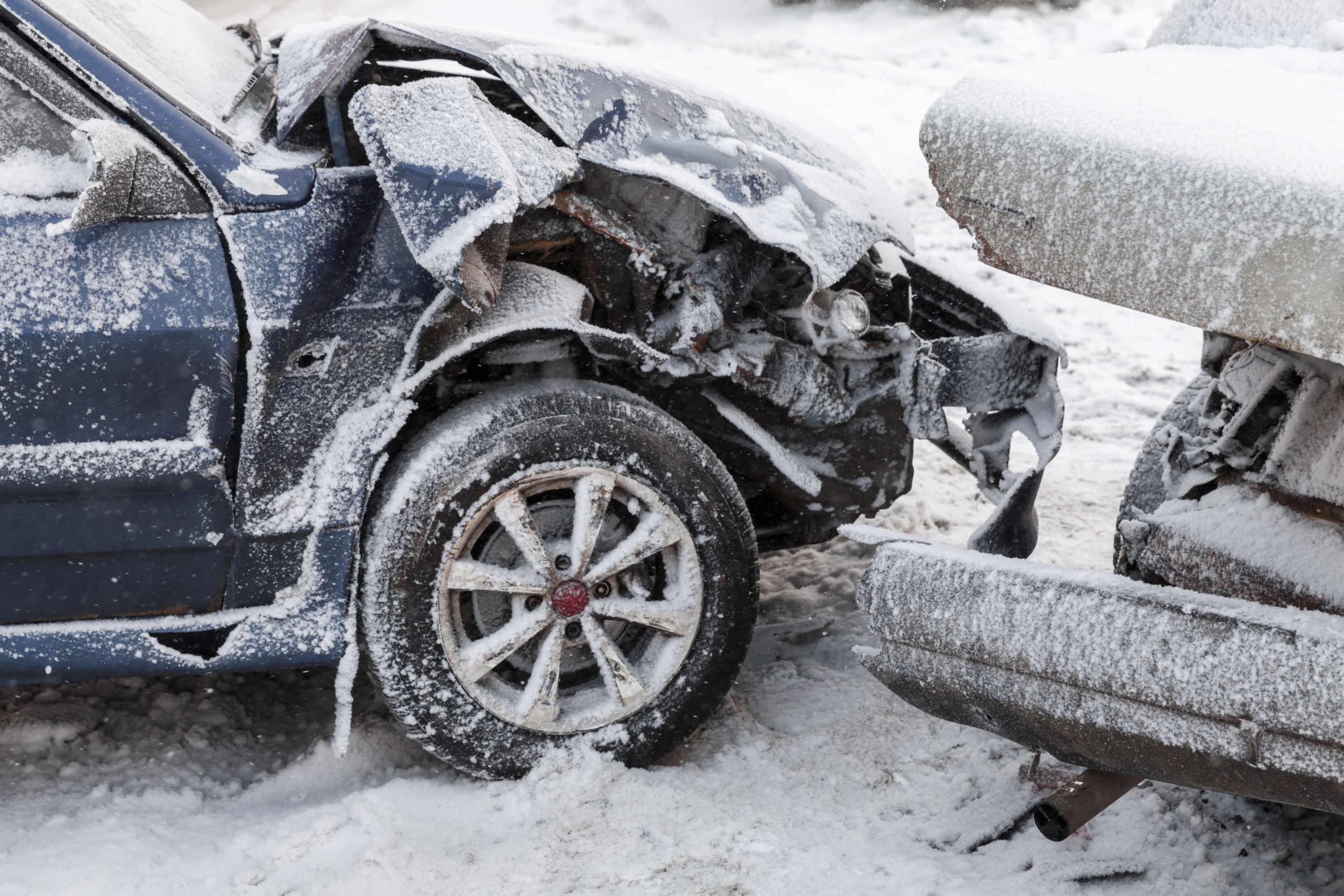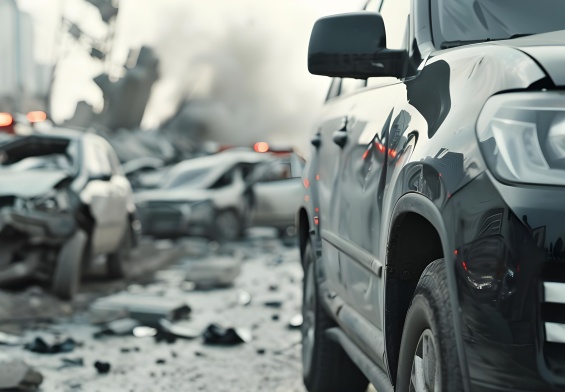A day without a car crash in New Jersey is incredibly rare; the probably don’t even exist. Falling victim to one can be a scary and life-changing event, whether it’s on the Turnpike, Route 3, or in Newark. Passengers also have unique rights when injured in a crash, which you can learn more about here.
They can saddle you with medical bills, lost wages, and complex insurance claims. Fortunately, a car accident lawyer in NJ can protect you from these perils.
Also, understanding how different types of accidents occur helps you stay safer on the road. More importantly, it prepares you to handle the aftermath if you’re ever involved in a crash.
How New Jersey Handles Fault in Car Accidents
New Jersey follows a comparative negligence rule that affects your ability to recover damages. You can still collect compensation even if you share some blame for the accident. But, there’s an important catch: your fault percentage cannot exceed the other driver’s. If it does, you’re not getting any damages.
Insurance companies often try to increase your share of fault to reduce their payouts. This tactic can significantly impact your settlement amount.
As a result, you might not get what you’re truly owed without legal representation. A qualified accident lawyer in New Jersey can work to keep fault percentages accurate. Even a brief consultation can prevent costly mistakes and protect your legal rights.
Essential Steps After Any Car Accident
Accidents can feel overwhelming, especially in the immediate aftermath. It’s easy to lose your cool and neglect crucial steps to protect yourself.
Immediate Safety Measures
First, move your vehicle out of traffic if it’s safe to do so. Check yourself and others for injuries right away. Call 911 immediately if anyone appears hurt, even if injuries seem minor.
Document Everything
Contact the police to file an official report. This neutral documentation proves invaluable when insurers and courts determine fault later on.
Next, exchange information with all involved parties. Collect names, phone numbers, license plate numbers, and insurance details.
For a deeper look at the evidence that can make or break your claim, check out what accident attorneys in NJ rely on to win cases.
Preserve Evidence
Take photographs of vehicle damage, skid marks, traffic signals, lighting conditions, and road surfaces. Your case will have lackluster support without them.
Additionally, gather contact information from witnesses. Independent accounts help verify how the accident occurred. They can also strengthen your version of events.
Look around for traffic cameras or nearby storefront security systems. They might have captured the incident, and the footage will also strengthen your case.
Seek Medical Attention
Visit a doctor or urgent care facility even if you feel fine. Some injuries don’t show symptoms until hours or days after an accident. Without medical documentation, it’s much harder to prove a link between the crash and any health issues.
Consider Legal Guidance
Contact an experienced New Jersey car accident attorney, especially if injuries are serious or fault is disputed. They can help you with insurance negotiations, fault disputes, and your right to fair compensation. If you’re unsure what to discuss during a consultation, here are key questions to ask an accident attorney in NJ.
You’re leaving your health, evidence, and the claim’s outcome to chance without taking these steps.
The 12 Most Common Car Accident Types in New Jersey
Understanding these accident patterns helps you recognize dangerous situations. You’ll also get a better idea of when professional legal help is necessary.
1. Rear-End Collisions
Rear-end crashes top the list as New Jersey’s most frequent accident type. They account for nearly 29% of all collisions statewide. These accidents commonly occur in stop-and-go traffic on major highways like the Turnpike, Garden State Parkway, or Route 1.
Driver distraction and following too closely are the primary causes. Weather conditions and poor visibility often contribute to these crashes as well.
Common sense dictates the trailing driver is usually the one responsible, but that’s not always the case. NJ’s comparative negligence rule creates a lot of room for blame to shift to the lead vehicle. For example, if the front driver braked suddenly or drove erratically, they might share fault.
Photos of vehicle damage, skid marks, and dashcam footage can help establish what really happened. Without a trustworthy accident lawyer, opposing insurance companies can swindle you and dispute fault percentages.
Rear-end impacts frequently lead to whiplash and spinal problems. Learn more about back and spine injuries from NJ and PA car accidents.
2. Angle or T-Bone Crashes
Angle crashes happen at intersections when one vehicle strikes another’s side. These collisions often result from running red lights, failing to yield right-of-way, or making hasty turns.
Most vehicles have a lot of collision safety features in the front or rear, but not in the sides. That makes t-bone accidents much more dangerous and cause more serious injuries.
In most cases, determining fault depends on who had the right-of-way. This point can get pretty muddy without traffic signals, intersection cameras, and witness statements.
If you’re involved in an angle crash, photograph the intersection, traffic signals, and vehicle approach angles. This documentation can challenge unfair fault assignments later.
3. Left-Turn and U-Turn Crashes
Left turns and U-turns create accident risks when drivers misjudge oncoming traffic speed or distance. New Jersey specifically tracks these incidents as a separate crash category.
Busy multi-lane roads with low visibility create a lot of opportunities for these. Building shadows, parked cars, or hills can obstruct a turning driver’s view of oncoming vehicles.
Insurance adjusters examine whether the turning driver used proper signals, checked sight lines adequately, and allowed enough clearance for their maneuver.
When fault gets disputed, witness statements and detailed scene photographs become especially important. A New Jersey car accident attorney can help ensure liability gets divided fairly based on the actual circumstances.
4. Same-Direction Sideswipe Crashes
Sideswipe accidents occur when two vehicles traveling in the same direction collide along their sides. These incidents are particularly common on highways like the Garden State Parkway or Interstate 78. The frequent lane changes and merges create opportunities for contact.
Common causes include failing to check blind spots, inadequate signaling, or gradually drifting between lanes. Highway construction zones also increase sideswipe risks due to narrowed lanes and shifting traffic patterns.
Damage patterns on both vehicles, witness accounts, and dashcam video help determine which car left its proper lane. A qualified lawyer can use this evidence to contest disputed liability claims.
5. Head-On Collisions
Head-on crashes are pretty rare, but incredibly dangerous. Both vehicles usually collide at high speeds. They can happen when a driver crosses the center line or is otherwise going the wrong way.
Driver fatigue, intoxication, medical emergencies, or poor visibility on undivided roads often contribute to head-on collisions. Sometimes mechanical failures like tire blowouts or steering problems play a role.
Proving fault is also more difficuly. It tends to take accident reconstruction specialists who can analyze physical evidence, vehicle damage patterns, and road conditions. An experienced New Jersey accident lawyer can coordinate with these experts.
6. Parked-Vehicle Crashes
Striking parked vehicles is especially common in densely populated areas like Hoboken, Jersey City, or busy downtown districts throughout the state. New Jersey includes “Parked Vehicle” as a distinct crash category in official reports.
These accidents can involve backing into a parking space, opening car doors into cyclists, or scraping alongside parked cars in tight spaces. The positioning and legality of the parked vehicle’s location often affects who bears responsibility.
Photographs showing curb markings, parking signs, door positions, and sight lines can strengthen your case if fault becomes disputed. Even seemingly straightforward parked car accidents can involve complex liability questions.
7. Backing Collisions
Backing accidents happen frequently in parking lots, driveways, and residential streets. They tend to happen at low speeds, but they can still injure pedestrians, cyclists, or children.
Poor visibility and blind spots around larger vehicles contribute to many backing accidents. Modern backup cameras and sensors help, but they don’t absolve drivers of all risks.
Preserving any backup camera footage and photographing sight lines from the driver’s position can help establish what was visible during the incident. Legal representation becomes important when fault gets contested in backing collision cases.
8. Fixed-Object Collisions
Single-vehicle crashes into poles, guardrails, trees, or barriers fall under the “Fixed Object” category in New Jersey crash reports. While these might seem straightforward, they can involve complex liability issues.
Bad weather, slippery roads, or swerving to avoid another hazard often trigger these accidents. Sometimes road design defects, missing guardrails, or inadequate warning signs contribute to the crash.
An attorney can investigate whether roadway conditions or maintenance issues played a role in your accident. This analysis might reveal extra parties who share responsibility for your damages.
9. Chain-Reaction Pileups
If one car suddenly slows or stops, like to avoid a deer, for example, it can cause a chain reaction of rear-end collisions. High speed corridors like the Turnpike and I-80 experience these commonly.
Determining fault becomes complex because many drivers may share varying degrees of responsibility. Insurance companies must assign fault percentages across several vehicles, leading to potential disputes.
Photos showing vehicle positions, debris patterns, and any available dashcam recordings help clarify the collision sequence. Legal counsel can coordinate expert analysis to defend against unfair fault assignments.
10. Pedestrian Crashes
Pedestrian accidents occur when vehicles strike people crossing streets or walking near roadways. Urban areas like Newark and busy shore towns with heavy foot traffic see higher rates of these incidents.
Lighting conditions, visibility factors, crosswalk markings, and pedestrian signals all play crucial roles in determining fault. Sometimes the driver and pedestrian share responsibility.
A New Jersey car accident attorney can help establish whether traffic signals and right-of-way rules were properly followed. This analysis often proves decisive in pedestrian accident cases.
11. Bicycle or Pedalcycle Crashes
Cyclists face unique dangers from car doors opening into bike lanes, right-hook turns by vehicles, and drivers crossing designated bike paths. New Jersey classifies these incidents as “Pedalcycle” crashes in official reports.
Fault often depends on lane markings, traffic signal compliance, and whether drivers properly checked blind spots before turning or changing lanes. Video footage from traffic cameras or nearby buses can provide crucial evidence.
Bike accidents have serious injury potential. Without legal representation, your compensation claims can be incredibly undervalued.
12. Animal and Non-Fixed Object Crashes
Drivers sometimes swerve to avoid deer, fallen debris, or other hazards, leading to secondary accidents. New Jersey tracks these incidents under separate “Animal” and “Non-Fixed Object” categories.
These accidents occur frequently on wooded roads throughout Morris, Monmouth, and Ocean counties, especially during dawn and dusk hours when deer are most active.
Liability depends on whether the crash was truly unavoidable or involved negligent driving decisions. For instance, swerving into oncoming traffic to avoid a small animal might be considered unreasonable.
Photographs of the hazard and surrounding road conditions help confirm what actually happened. An attorney can argue for proper insurance coverage if your company tries to deny the claim.
Understanding New Jersey’s Fault System
New Jersey uses a modified comparative negligence system that affects your ability to recover damages after an accident. Under this system, you can still receive compensation even if you partially caused the crash, but only if your fault percentage doesn’t exceed the other driver’s.
For example, if you’re found 30% at fault and the other driver is 70% at fault, you can recover damages reduced by your 30% share. But, if you’re more than 50% at fault, you can’t recover anything from the other driver.
How Insurance Companies Assign Fault
Insurance adjusters determine fault percentages by reviewing many factors:
- Police reports and officer observations
- Witness statements and testimony
- Road design and traffic control devices
- Applicable motor vehicle laws and regulations
- Physical evidence like skid marks and vehicle damage
Each case gets evaluated based on its specific circumstances. Without thorough documentation, you won’t get a fair determination.
Challenging Fault Determinations
If you disagree with how fault was assigned, you have several options for review:
You can appeal directly with the insurance company by providing extra evidence or expert opinions. The New Jersey Insurance Ombudsman also offers a review process for disputed claims.
For more serious disputes, pursuing your case through the court system may be necessary. A New Jersey car accident attorney can check which approach offers the best chance of success based on your specific situation.
Protecting Your Rights After a Car Accident
Most New Jersey car accidents fall into predictable patterns. You won’t respond appropriately when crashes happen without understanding the common accidents types. Or how they occur.
Remember to document everything at the scene, seek prompt medical evaluation, and be aware that insurance companies often try to shift fault percentages in their favor. When injuries are serious or liability is disputed, consulting with an experienced accident lawyer in New Jersey can protect your rights and help you pursue fair compensation.
For a broader overview of state laws and accident procedures, see what you need to know about car accidents in New Jersey.
By combining careful evidence collection with professional legal guidance when needed, you give yourself the best opportunity to recover fully after an accident on New Jersey’s roads.
Resources
https://www.nj.gov/dobi/ins_ombudsman/ombuds_acnsfaq.html
https://law.justia.com/codes/new-jersey/title-2a/section-2a-15-5-1/
https://www.nhtsa.gov/sites/nhtsa.gov/files/task20120report.pdf
https://www.nj.gov/comptroller/news/2024/approved/20241218.shtml
https://www.nj.gov/transportation/refdata/accident/crash_detail_summary.shtm
https://www.nj.gov/transportation/refdata/accident/pdf/2017CrashTable.pdf




